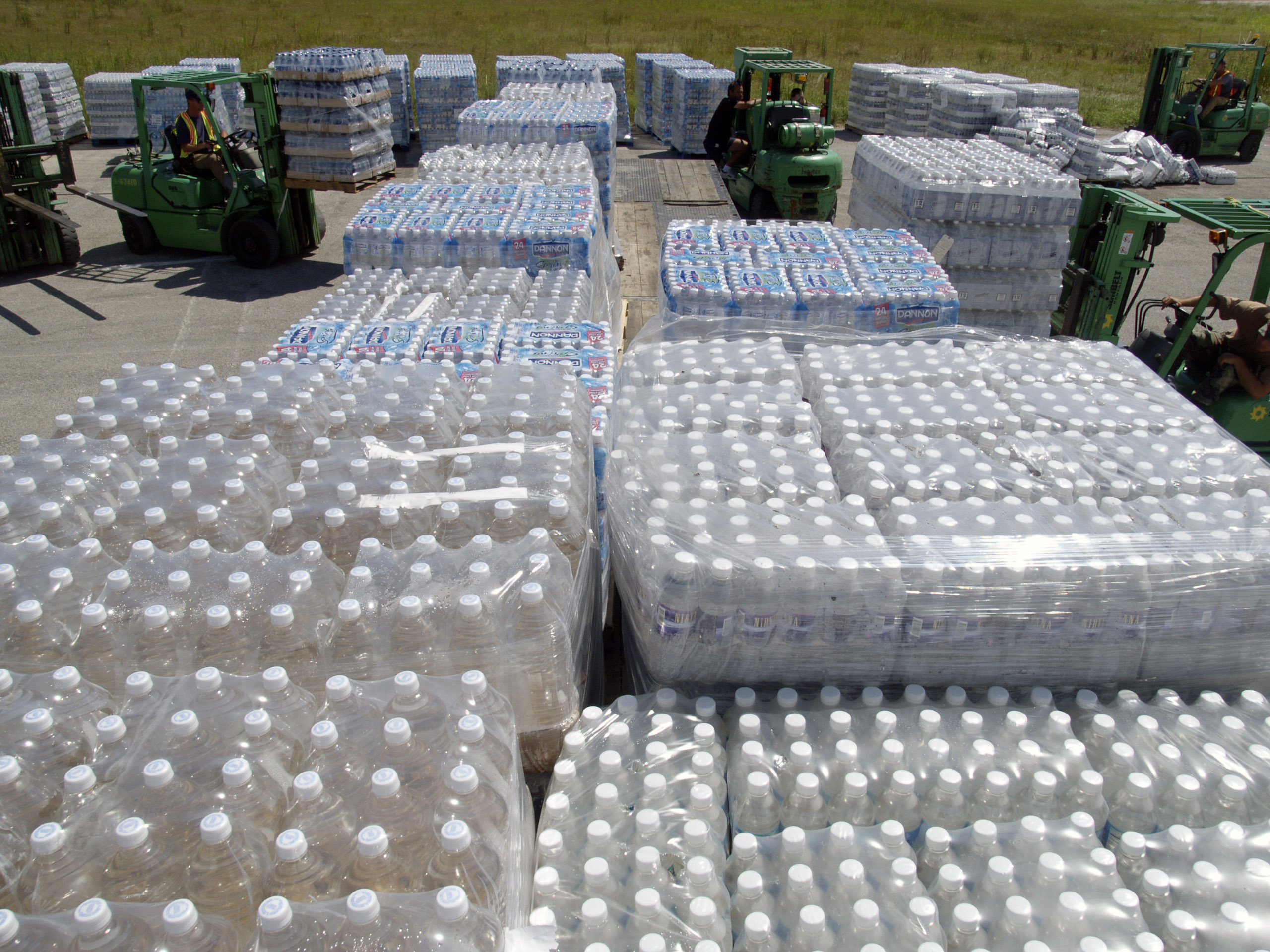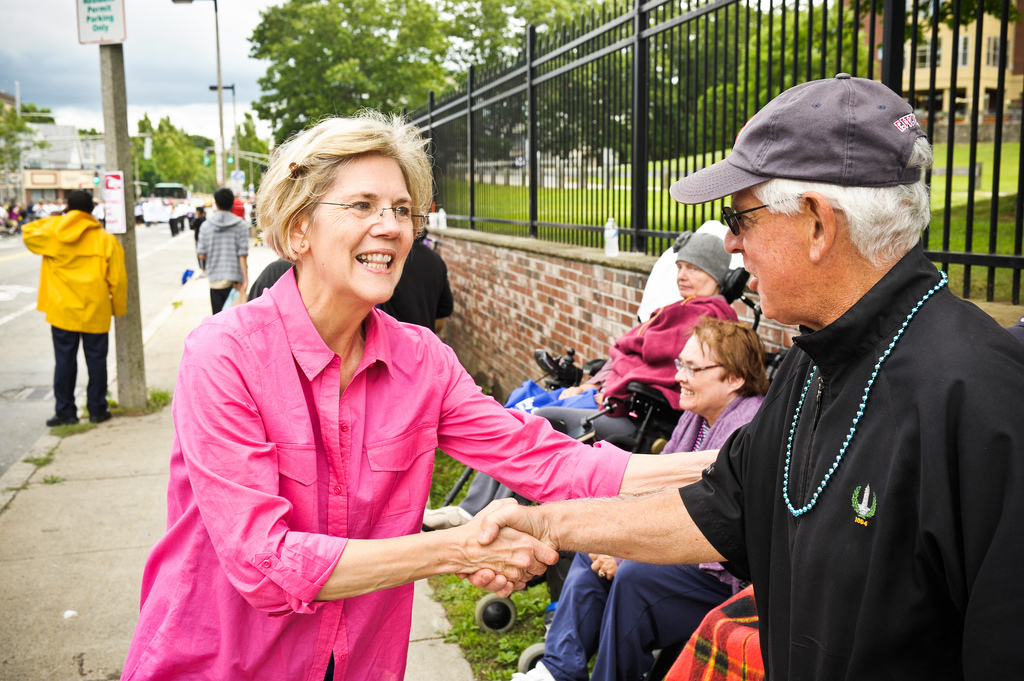The world is consuming bottled water at a rapid rate. Global consumption of bottled water is increasing by 10 percent annually and global expenditures amount to approximately $100 billion per year.[1] The largest market for bottled water is in developed countries, with the United States being the top consumer.[2] In the US, people are purchasing about 30 billion water bottles a year, spending approximately $11.8 billion.[3] Furthermore, over 50 percent of Americans drink bottled water occasionally or as their main source of drinking water.[4] This kind of behavior seems irrational when the United States offers public access to clean, regulated tap water.[5] The question is, why are people paying money for a good that they already have? And why support an industry that has numerous negative effects on the environment? There are a few factors that help explain this, including public ignorance regarding tap water, the marketing campaigns of bottled water, and distrust of the government.
Bottled water has a number of negative consequences on the environment. First, there is the issue of wasteful use of plastic. Only 25 percent of water bottles purchased in the US are actually recycled.[6] Furthermore, consuming bottled water means supporting the unnecessary use of oil, a rapidly-depleting natural resource. Crude oil is used in the manufacture of plastic water bottles, and oil is also used to fuel the vehicles that transport the water. In 2007, the manufacture and transportation of plastic bottles in the US used between 32 and 54 million barrels of oil.[7] In addition, it may be a surprising fact to some that bottled water wastes water, another important natural resource. In fact, it takes three times the amount of water to make the bottle than to fill the inside of a water bottle.[8]
Clearly, bottled water impacts the environment in a negative manner. Many people are aware of this and still choose bottled water over tap water, possibly because they are unaware of the truth about tap water. To start, many people have an unexplainable aversion to tap water. According to a 2009 Gallup Poll, over half of Americans express a great deal of concern over the safety of public drinking water.[9] However, tap water in the United States is more heavily regulated than bottled water. US municipal water is subject to EPA testing and is held to a higher standard than bottled water which is subject to more lax FDA testing, making it significantly cleaner.[10] In addition, tap water is far cheaper than bottled water. The Pacific Institute reports that tap water is up to 1000 times less expensive than bottled water.[11] To make this point even clearer, if the cost of tap water were the same as bottled water, the monthly water bill would be about $9,000.[12] One would think that the economics alone of this issue would encourage Americans to use only tap water, but some people believe that bottled water is of higher quality. Many people choose bottled over tap water because they think it tastes better. However, an increasing number of bottled water companies use municipal water as their source.[13] What’s more, tap water consistently performs better than bottled water in “blind” taste tests.[14] If people were aware of these facts, perhaps more would choose to drink tap water over bottled water, considering it is cleaner, cheaper, and tastes better.
The rapid increase in popular consumption of bottled water, despite the advantages of tap water, can be partially explained by the effective marketing campaigns of bottled water companies. Advertisements promote bottled water, seeking to enhance its value, but the idea of bottled water as “exotic” or “natural” is misleading.[15] As the Government Accountability Office reports, misbranding is widespread in the bottled water industry.[16] Bottled water is portrayed to consumers as the safe alternative to tap water, which is presented as being unnatural and dirty. However, as previously mentioned, more bottled water companies are using tap water, rather than water from natural springs.[17] Furthermore, in 2000, future chairman of PepsiCo’s North American Beverage and Food Division Robert S. Morrison stated that “‘the biggest enemy is tap water’” [18] and supported the efforts of other bottled water manufacturers to create a higher demand for bottled water by increasing public fear of tap water (PepsiCo is the manufacturer of Dasani). The idea that tap water is unsafe is only in our heads, put there by the marketing executives of bottled water companies. Moreover, the marketing of bottled water proves especially successful in appealing to two very different types of consumers: those who consider nature to be safe and pure, and those who view nature as unclean. Best put by Richard Wilk, an anthropology professor at Indiana University, “If nature is dangerous, technology makes it safe. By generic reverse osmosis, water is ‘pure’ because it has passed through a machine. The technology is protecting you from a wild and dangerous nature. For the romantic, water is pure because it comes straight from nature. Technology is a danger, and the way to ensure health is with natural water.”[19] Marketers appeal to both groups by utilizing the word “pure” to describe bottled water.
An interesting experiment was done at Hope College in Michigan, where a group of students gave a taste test of three labeled types of water — tap, Aquafina and imported water — and recorded students’ ratings. However, all the water was, in fact, tap water from the school. Despite the fact that it was the exact same water in each cup, students reported they could taste the difference, and ranked each accordingly: “imported water” received the best taste rating, followed by “Aquafina” and then tap water as the worst. Clearly, water labels have a significant effect on a person’s perception of taste. This belief that bottled water tastes better reflects the strong effects of marketing: we believe we are getting a high-quality experience by purchasing bottled water, when in reality we are receiving a less-regulated, more expensive product that tastes worse than tap water.[20]
The bottled water culture in our society is also a reflection of public distrust in the government. Although the US government provides and strictly regulates tap water, Americans increasingly choose to purchase bottled water. Once considered a free public good, tap water has been reduced to washing dishes and doing laundry. For drinking, bottled water has become the replacement, a private commodity. This clash between that which is public and that which is private highlights an issue in contemporary society that is not often discussed. As Richard Wilk explains, “If we think of the house and home as extensions of the body, personal and intimate, then anything that crosses the boundary between the public world and the house is potentially dangerous and impure”.[21] Therefore, people may consider public goods such as tap water to be “impure” and turn to the privatized version of this good in order to assure its quality, a theory supported by the advertising campaigns of bottled water, which call for people to take control of their water consumption, a basic human need, and trust bottled water companies to protect them, suggesting that their respective governments cannot protect them sufficiently.[22] The conflicting ideas can be conceptualized as a moral-political argument in favor of the common good versus individualistic attitudes and private consumption. In this case, the common good is tap water against the private bottled water. Bottled water seems to be succeeding in fostering a feeling of distrust in our government and, as Wilk claims, “erodes the idea that the citizenry is the best avenue towards the public good.”[23]
Clearly, bottled water affects a variety of aspects of our lives in a negative manner. It harms the environment by wasting plastic, oil, and water, thus creating unnecessary waste. Our consumption of bottled water also makes us waste money on a good we already have access to at an infinitely lower cost. Furthermore, bottled water contributes to a rise in government distrust and a decrease in the value of a staple public good: municipal water. So why have we continued to consume this product? Because we have incorrect notions about tap water being dirty and unsafe, possibly due to the success of bottled water marketing campaigns. But, if Americans knew the facts about tap water, perhaps we would change our behavior. Tap water is cleaner, cheaper, and tastes better, so we should put an end to our bottled water consumption and not take for granted the fact that we are fortunate enough to have access to clean drinking water.
Lauren Corvese
Political Science ’16
References:
[1] The Pacific Institute. 2004. “The Myth and Reality of Bottled Water.” Last Modified November 12. http://pacinst.org/publication/the-myth-and-reality-of-bottled-water/.
[2] The Pacific Institute. 2004. “The Myth and Reality of Bottled Water.” Last Modified November 12. http://pacinst.org/publication/the-myth-and-reality-of-bottled-water/.
[3] Statistic Brain. 2014. “Bottled Water Statistics.” Last updated January 2. http://www.statisticbrain.com/bottled-water-statistics/.
[4] The Pacific Institute. 2004. “The Myth and Reality of Bottled Water.” Last Modified November 12. http://pacinst.org/publication/the-myth-and-reality-of-bottled-water/.
[5] Wilk, Richard. 2006. “Bottled Water: The Pure Commodity in the Age of Branding.” Journal of Consumer Culture. 6: 303-325. Sage Journals.
[6] United States Government, Accountability Office. 2009. Bottled Water FDA Safety and Consumer Protections are often Less Stringent than Comparable EPA Protections for Tap Water: Report to Congressional Requesters, edited by John B. Stephenson. Washington, D.C.: U.S. http://www.gao.gov/new.items/d09610.pdf.
[7] Statistic Brain. 2014. “Bottled Water Statistics.” Last updated January 2. http://www.statisticbrain.com/bottled-water-statistics/.
[8] The Pacific Institute. 2004. “The Myth and Reality of Bottled Water.” Accessed March 10, 2014. http://pacinst.org/publication/the-myth-and-reality-of-bottled-water/.
[9] Saad, Lydia. 2009. “Water Pollution Americans’ Top Green Concern.” Gallup, March 25. http://www.gallup.com/poll/117079/water-pollution-americans-top-green-concern.aspx.
[10] The Pacific Institute. 2004. “The Myth and Reality of Bottled Water.” Accessed March 10, 2014. http://pacinst.org/publication/the-myth-and-reality-of-bottled-water/.
[11] The Pacific Institute. 2004. “The Myth and Reality of Bottled Water.” Accessed March 10, 2014. http://pacinst.org/publication/the-myth-and-reality-of-bottled-water/.
[12] Statistic Brain. 2014. “Bottled Water Statistics.” Last updated January 2. http://www.statisticbrain.com/bottled-water-statistics/.
[13] 2010. “Bottling Our Cities’ Tap Water.” Food and Water Watch, August. http://documents.foodandwaterwatch.org/doc/MunicipalWater-IssueBrief.pdf.
[14] Wilk, Richard. 2006. “Bottled Water: The Pure Commodity in the Age of Branding.” Journal of Consumer Culture. 6: 303-325. Sage Journals.
[15] Wilk, Richard. 2006. “Bottled Water: The Pure Commodity in the Age of Branding.” Journal of Consumer Culture. 6: 303-325. Sage Journals.
[16] United States Government, Accountability Office. 2009. Bottled Water FDA Safety and Consumer Protections are often Less Stringent than Comparable EPA Protections for Tap Water: Report to Congressional Requesters, edited by John B. Stephenson. Washington, D.C.: U.S. http://www.gao.gov/new.items/d09610.pdf.
[17] 2010. “Bottling Our Cities’ Tap Water.” Food and Water Watch, August. http://documents.foodandwaterwatch.org/doc/MunicipalWater-IssueBrief.pdf.
[18] Gleick, Peter H. 2010. Bottled and Sold the Story Behind our Obsession with Bottled Water. Washington, DC : Island Press.
[19] Wilk, Richard. 2006. “Bottled Water: The Pure Commodity in the Age of Branding.” Journal of Consumer Culture. 6: 303-325. Sage Journals.
[20] Fett, Jordan and Cole Talsma. 2006. “A Bottled-Water Culture: Are We Being Told What to Taste?” Hope College. Published April 24. http://math.hope.edu/swanson/statlabs/proj2_sample3.htm.
[21] Wilk, Richard. 2006. “Bottled Water: The Pure Commodity in the Age of Branding.” Journal of Consumer Culture. 6: 303-325. Sage Journals.
[22] Wilk, Richard. 2006. “Bottled Water: The Pure Commodity in the Age of Branding.” Journal of Consumer Culture. 6: 303-325. Sage Journals.
[23] Wilk, Richard. 2006. “Bottled Water: The Pure Commodity in the Age of Branding.” Journal of Consumer Culture. 6: 303-325. Sage Journals.


